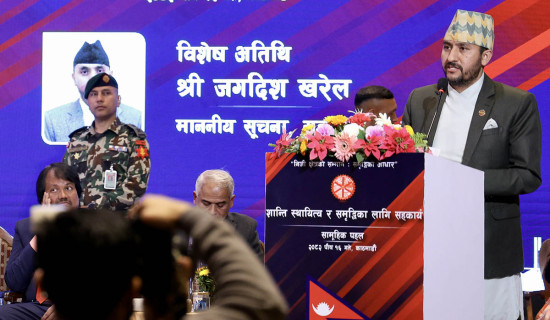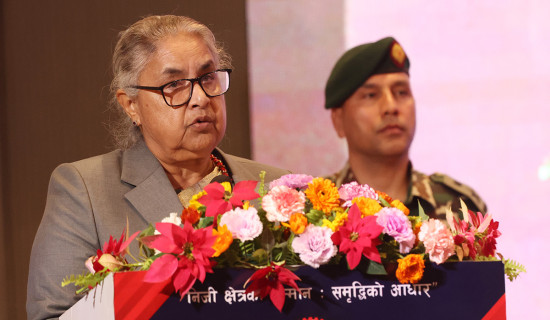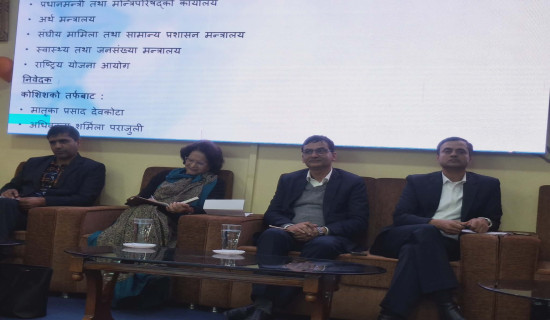- Thursday, 1 January 2026
Reduce Rain-induced Disasters
The monsoon season has just entered some parts of the country and this news may have come as good tidings for some people, especially those who are engaged in the agricultural sector. But for many others, this message also has come to announce the arrival of bad news, especially for those who have to prepare themselves to face the wraths of nature, loss of lives and property that pour down with the rains. Floods and landslides have already started to take place in some regions, for now, mainly in the eastern regions of the country. But experts have predicted that it will take some more days for it to reach the western region and thus seasonal crops like corn and paddy are drying up due to the scorching heat and lack of rain in those areas.
This time the meteorologists have done a good job in warning the people and the government to be better prepared for more rains than usual and they have also been told to be ready to respond quickly to such events. It has also given an estimate of how many settlements will be affected and how many people will have to be moved to safer areas. Encouragingly, the government has also taken such suggestions from experts and others, seriously and it has made plans to bring together the local level bodies and the security forces to respond quickly to emergencies and to rescue people and their property when needed.
Casualties
Billions of rupees worth of cultivated crops are washed away, livestock killed and houses and other earthly belongings of the poor people are lost in the floods. Many people also lose their lives, but much of such tragedies could at least be minimised and even prevented, through the coordination of all sides in working together in tandem, for rescuing the unfortunate victims of this disaster and in protecting their belongings and sometimes their lives as well. While talking of heavy rains that causes much damage and destruction during the monsoon season, one must not forget to mention the regular incidents of landslides that takes the lives of poor villagers, especially in the hilly areas of this country, and which also causes havoc in the existence of those who have been lucky enough to survive these frightening experiences.
It is difficult to pin-point the major factor which causes landslides, but it can be said quite assertively that heavy rains and faulty planning of roads and houses in vulnerable hilly areas contribute immensely in causing this disaster, which otherwise could have been avoided. If we are to look at reports of such incidents, it can also be felt that the lesser developed nations suffer more than the developed countries, which have better technology and also stricter regulations for constructing roads and building houses.
In Nepal, which is in the category of least developed countries (LDCs), the frequent landslides we see during the rainy season, do not only take lives and cause huge loss of property, but it also affects the movement of vehicles and causes much trouble for the people who have to travel by road, while trying to reach one place or the other. It would be a folly and a great understatement, if we only say that the road conditions in almost all parts of the country are bad. One need not have to go further than the most developed metropolis of the nation, which is Kathmandu, to experience the jolty rides that one is forced to take whether on public transport or private vehicles.
The bad roads also cause a lot of accidents, many fatal ones, not only in the crowded city roads but also on highways which play an important role to link different parts of the nation. First of all, roads are mostly constructed in far off places and places with difficult terrain, without proper planning or designs made by a competent engineer. It probably would be a big shock for many, if they come to know that many roads have been constructed at the instruction of land owners and the whims of machine operators of bulldozers and other machinery, used for digging land.
It is needless to say that both greedy land owners and drivers of bulldozers, have no engineering skills or knowledge in constructing safe and long lasting roads on the rain-soaked soil which is not firm during the monsoons and at other times as well. Add to this the rampant cases of corruption at all levels while constructing these roads just because of the adamant demands of mostly local level officials and the members of the land mafia, who are ever hungry for amassing more money, by cheating innocent land owners with the cooperation of corrupt civil servants at different land offices. The role of the crooked construction agencies, who are compelled to please all stakeholders and keep some profit for themselves, cannot be ignored too. All these factors are to be blamed for the bad shape of roads in different parts of the country and the dangers it causes for the people.
It is heartening to know that the government has formed a joint body to get into action for quick rescue efforts and for relief works as well. Besides installing emergency toll free phone numbers to get information about the forecast of the weather, there are also phone numbers for calling up the authorities for help and to also seek the government's attention in providing immediate relief materials. This will help tremendously in minimising human sufferings and providing a sense of security among the people, both of which are needed when such incidents occur. In spite of the disturbing warnings of more rains, let us hope that the government stands firm to fulfil the commitments it has made to the people and the situation will not be more destructive than it has been predicted.
(The author is former chief editor of this daily)














-original-thumb.jpg)


